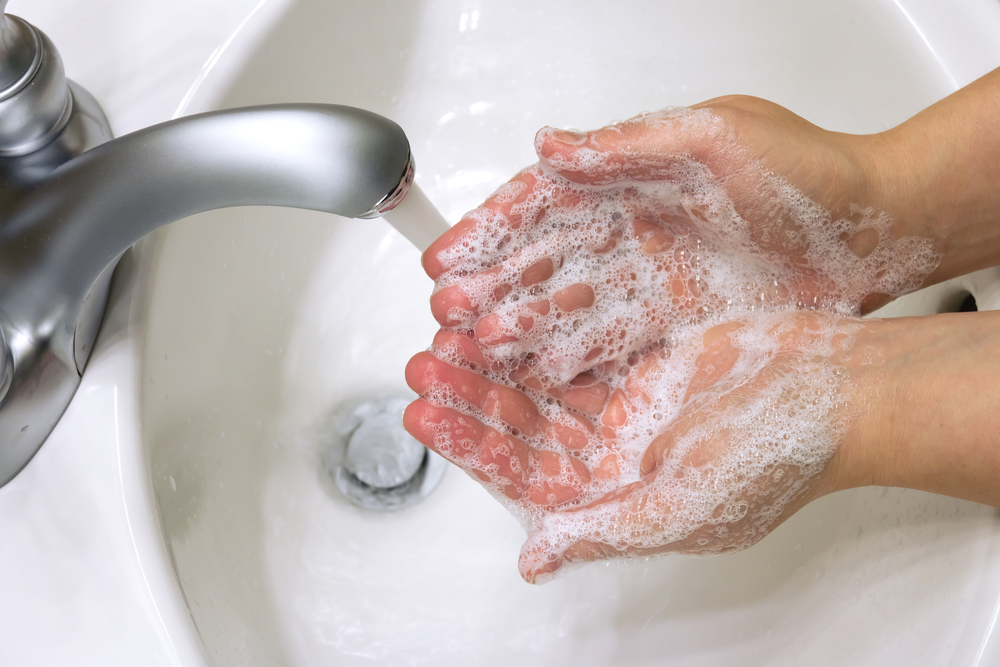The onslaught of the COVID-19 pandemic has led to frantic efforts to limit the spread of the virus, from social distancing to stocking up on hand sanitizer. While many people are out of work or working from home, essential service providers must still report to their jobs in-person each day. If you are keeping your childcare center open during this time, or want to learn more about how to keep your classrooms as clean as possible once you resume operations, here are some pointers. Note, these are all suggestions. Please consult the CDC and your local health department for the most up to date procedures.
Take Common-Sense Precautions
When colds, flu, or other communicable illnesses are making their way through your community, common-sense precautions can go a long way toward stemming the spread. Cough and sneeze into your elbow (or a tissue as long as you toss it in the trash immediately afterward). Encourage children to do likewise, and keep plenty of tissues in your classroom. Be sure the person washes their hands after sneezing into a tissue and throwing it in the trash. Remind them not to share cups or use their hands to share food, all in the name of keeping illnesses in check.
Sanitize and Disinfect Surfaces Regularly
Regularly sanitize and disinfect high-touch surfaces such as doorknobs and tables. Remember that sanitizing lowers germ levels to the point that they generally don’t pose a hazard, while disinfecting kills most viruses and bacteria. (Check labels on cleaning solutions to make sure you’re actually declaring war on the germs you want to kill). Microfiber cloths are an ideal choice for cleaning because they help remove dust and germs, and they can be washed and used again; keep plenty on hand so they can be washed frequently.
Keep Your Hands Clean
By now, you’ve probably lost track of how often you’ve heard this admonition. But it’s critical not only to wash your hands often, but to use the right technique. Healthcare providers advise washing your hands with soap and water for at least 20 seconds. One way to know you’ve washed long enough is to sing “Happy Birthday” twice while thoroughly cleaning the front and back of your hands, between your fingers, and around your nails. Teach children about the importance of hand-washing, too.
When you don’t have immediate access to soap and water, use hand sanitizer that’s at least 60% alcohol. Frequent, thorough hand-washing removes from your skin the microbes that cause illness. Washing and sanitizing reduce the likelihood of spreading viruses and bacteria when touching objects or having close contact with people, such as shaking hands.
Avoid Contact with Sick People and Limit Close Contact with Everyone
Encourage parents to keep their children at home if they are sick. Likewise, remind your staff not to come to work if they’re not feeling well. If a child in your care becomes ill at school, keep him separate from the others until someone arrives to take him home. This helps reduce the likelihood of transmitting the illness to others. You may want to designate an area ahead of time for this purpose so you’re not trying to figure out a solution when a child actually becomes sick.
Of course, there are situations when close contact with children can’t be avoided, but there are some practical ways to limit it when it’s not necessary. At the height of cold and flu season, consider nixing any activities that require children to hold hands or touch their faces, since eyes, noses, and mouths are typical entry points for germs. Look for games and other activities that don’t require much in the way of hands-on support from staff, too. Limiting contact, even when people appear healthy, minimizes the chances that someone who is a carrier of illness (but not showing symptoms) can infect others.
Keep Play Areas as Sanitary as Possible
When a bug is going around, consider temporarily removing from the classroom toys and other objects that are difficult to clean or can’t withstand multiple cleanings. Large plush toys and learning centers that are hard to take apart for a thorough cleaning may need to be kept in the closet until the scourge of colds and flu have run their course. Laminate flash cards and other paper-based items that kids touch frequently so you can wipe them down regularly to remove pathogens.
These tips are important to keep in mind, not only when we’re in the midst of a public health crisis, but throughout all seasons to keep you, your staff, and the children in your care as healthy as possible.

